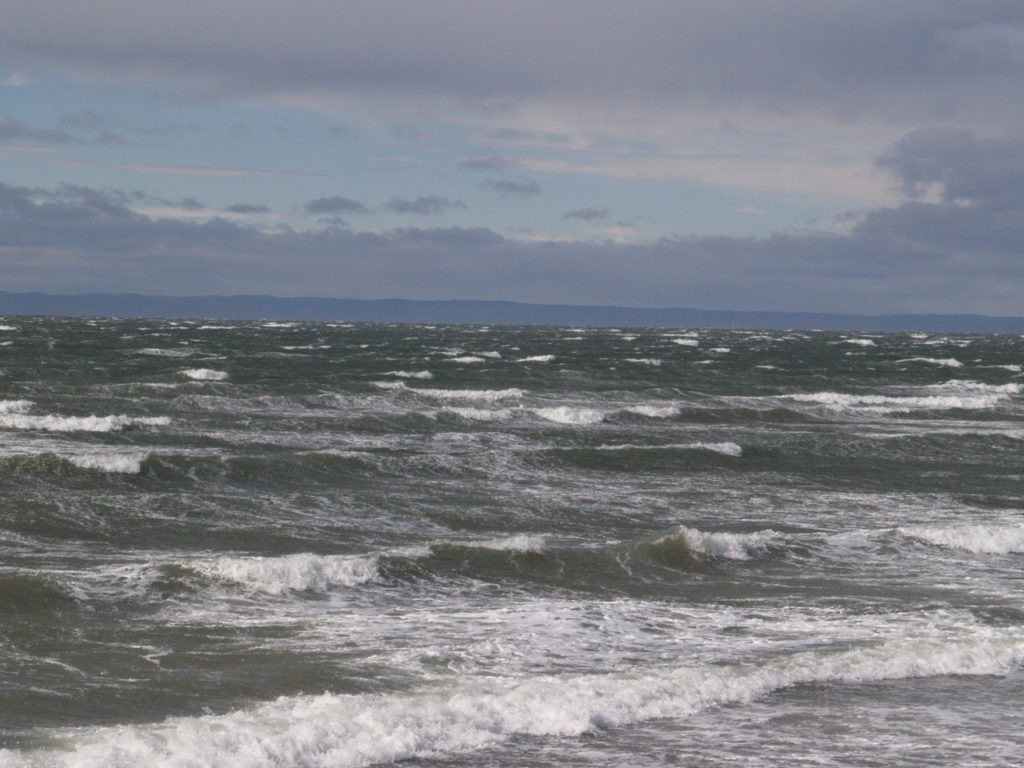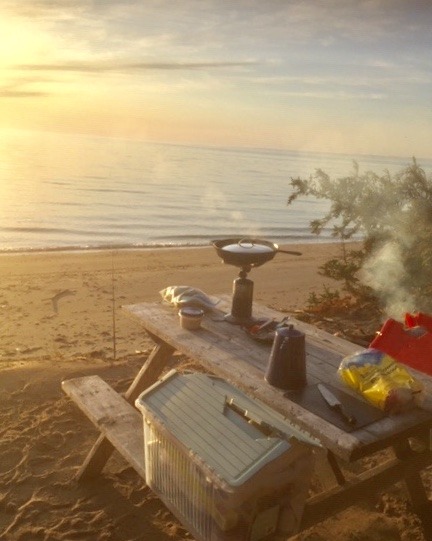Everyone who has ever been camping knows that the main question before planning a trip is: what will the weather be that week? This makes perfect sense when you consider how much the weather has an impact on you when you are living outdoors.
What is good camping weather? Good camping weather is a high in the daytime of around 72-78F, low in the evening not below 55F, without rain, sunny and calm. Such weather is not only good, its great, near perfect. If you can figure out the time of year when the weather is the most consistently close to this ideal, the odds of having a great camping trip increase significantly. For most in North America that sort of reliable weather is usually in the early to mid-fall.
I more often try to hold to the idea of there being no bad weather, just bad clothes. But let’s be real, even with amazing clothing, bad weather can wear you down merely from its persistence. When I go camping, and I think for when a majority of y’all go camping, we’re doing it to have fun and be refreshed, not constantly test our resolve and toughness.
Therefore, most of the time there are such things as good weather for camping and bad weather for camping. The definition I gave for ‘good camping weather’ above above might be much narrower than experienced campers would agree with, but I bet they would all agree that such weather is good for camping.
Table of Contents
Temperature
Having a moderate high and low temperature is key to having good weather for camping. This is because it will limit the room for error in deciding what kind of equipment to bring and how much clothing will be needed. For example, when your temperature range is moderate, it means you will be camping at a time of year other than winter. This means you will only require a three season tent rather than a four season tent. Three season tents are more common, come in a wide arrange of sizes and styles, and they will be cheaper than a four season tent of the same size and quality.
Likewise, when the temperatures for your trip are moderately warm, much less thought will be needed to be given to what and how much clothing you will be wearing. The minute the temperature gets colder or covers a broader range, the more garment planning and packing you will have to do. A good example of this is when you might be planning a camping trip in the desert. Sure, it might be plenty warm during the day, but once the sun sets the temperature can drop significantly, even at the risk of hypothermia. In that situation, and any with cooler temperatures, you will want to be prepared with warm clothing layers that you can add as needed. When its comfortably warm all the time, you will need less to wear and less to bring.
Its also important to remember that nighttime temperatures usually have an impact on how well you will sleep. Sleeping in the cold with an inadequate sleeping bag and pad is miserable. On the flip side, sleeping in hot temperatures can also be uncomfortable if your tent does not vent well and your sleeping bag is too warm a rating for the temperature or doesn’t wick sweat well, leaving you clammy. Sometimes, even with proper equipment, hot weather while sleeping can feel oppressive.
Precipitation
This, even more than temperature, is usually the most important concern for campers when they want to know what weather to expect for their trip. IS IT GOING TO RAIN? It can make or break your trip depending on what and how much is going to fall from the sky. Rain, snow, sleet and hail all affect what you will want to do outdoors, if anything.
This is why I would say good camping weather is a lack of precipitation. It totally takes it out of the equation! If its not going to come down, you don’t have to think of sheilding up. Though all tents should be waterproof, you won’t be second guessing if yours is if its not raining. Without rain, you can even have the option of taking off your rain fly and sleeping under mesh, with the starry sky in view.
Think also that when its not raining, you don’t have to worry about rain wear. You won’t need a rain jacket and you won’t need to worry if said rain jacket is actually waterproof. I’ve had used rain jackets leak in the arms, so its important to keep in mind. Rain pants can be expensive and aren’t all that comfortable.
Also, with rain, once something gets wet, the next question is how to get it dry. Wet shoes. Wet socks. Wet rain jackets getting condensation on the inside. Unless you have a tarp set up, you likely won’t have somewhere to hang things up out of the rain. When you do have a tarp and hang things up under it to dry while its raining, it can take a long time for things to dry because of the humidity.
If you have dry weather while camping, you won’t have to face any of these problems. Items that get wet due to spills, clothes that need to dry after washing or towels that are damp from the beach can simply be hung up and will be dry in as little as a few hours or as long as overnight. It won’t take days though, like it could when its raining.
Finally, persistent, especially heavy, rain while camping is just not fun. If you are active in such weather, you will eventually get soaked. If you aren’t active in such weather, then you are inside your tent or possibly a shelter at a campground. Sometimes this isn’t a bad thing if you are looking for a few hours of relaxation with a book or a game of cards with friends. If you have been stuck inside your tent for longer than a day and a half while camping, and especially if there are kids stuck inside a tent for longer than a day and a half, you will start to pull your hair out.
If its raining hard enough and long enough, sometimes a good option is to go home. Yeah, basically quit. If you are only out for a short camping trip and the weather is getting only worse, leaving early can be the best and safest option. My husband and I had to do this on one trip in Algonquin Park in Ontario, Canada. We were camping at Lake Eustache when it started to come down. And it just kept coming. The black flies were horrible, everything was damp and muggy and there was nothing we could do but stay in the tent and stare at the ceiling. I was new to camping and my husband said these sorts of trips were the ones that almost made you question why you would ever go out there camping. The rain kept getting heavier, so we decided to pack up and hike back to our car. We were soaked to the skin by the time we got back to where we parked, but thankfully had dry clothes to change into. I was so relieved! Light drizzle isn’t that bad, but sometimes the weather is just bad weather for what you want to do.
Clear Skies
When it comes to the condition of the skies, less clouds usually translates to better weather for camping. One reason is that the more clouds you have. the more likely it is going to rain. For me though, fewer clouds usually mean prettier days. Heavy, overcast skies frequently bring higher humidity and will make it darker earlier as the sun goes down. Anything partly sunny and clearer is quite enjoyable. Remember too, that you will want clear skies afterr night fall for the best stargazing, one of the highlights of spending the night outdoors.
Calm Conditions

This is a special concern of my own. Wind. I find nothing quite as tiring as being in a constant brisk wind. The noise, the push, the chilling factor. After a few hours, I just want out of it. Strong wind when its cold is even worse. You can build wind screens, but it still seems to manage to cause problems either with the campfire or making anything not tied down to flap incessantly.
Calm, on the other hand, is bliss. You can hear the birds and the squirrels. Your face won’t get wind burned. Your skin won’t get as dried out. You can set your coffee down for two minutes without it turning ice cold. Calm invites basking and exploring.
When you have great camping weather, it can be like a paradise that you never want to leave. Really terrible weather will send you packing.
